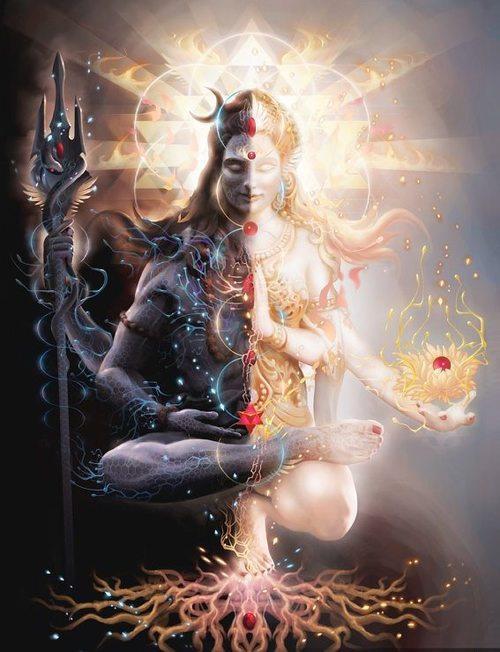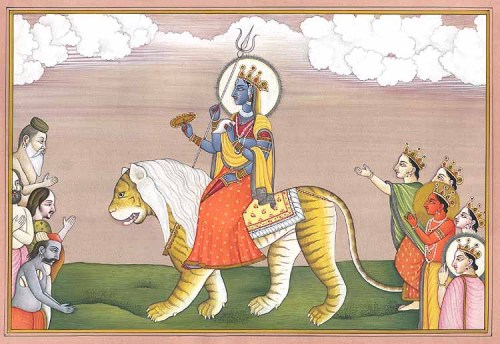When Isaac Newton was sitting beneath a tree, it is said that an apple hit him on the head, and through pondering over this phenomenon he discovered the Universal Law of Gravitation. This was like a shock treatment administered by nature. This event triggered a train of thought in Newton's mind. He started thinking about why , when an apple fell, it came down and did not go up. This thought led to the discovery of the Law of Gravitation. This law had always been there, but no one had discovered it before. Then, after a long time, nature hit man on the head and told him in the language of hammering: O Man, discover the law that has remained undiscovered till this date.
This was like shock treatment.Shock treatment is a law of nature. This shock treatment can be called a challenge. Every human being faces this kind of challenge in some way or the other. This shock treatment is a blessing in disguise, for it always acts for the betterment of the person in question. And perhaps for all others as well.
If you are facing some problem in your life, in your job, business or family , don't be negative. Take it as a positive phenomenon. If you turn negative, you cannot avail of the opportunity it presents. But if you are positive, you will try to understand the real message behind the challenge and very soon you will find that the challenge was nothing but a stepping stone in your life to better things.
Shock treatment is the language of nature. Nature always tries to give you a lesson, shows you the right direction and tries to unfold your potential. It tries to make you aware of opportunities which present themselves all around you. Don't ignore such warnings, take them seriously . They will give you right guidance and turn your failure into success.
Nature is the best guide. But nature always speaks in the language of hammering, that is, challenge. A challenge is not an accidental event. Challenge always comes from nature.
In this way nature tries to awaken your mind, it tries to initiate a process of rethinking.
At first nature tries to give advice in simple language, but when you fail to take that advice, it uses the method of shock treatment. This is like awakening a person who is not ready to wake up with a simple call. All the challenges in life are positive challenges.
When you face any challenge, take it in a positive manner; try to understand the lesson hidden in it.
"The falling of an apple" on one's head is a very common phenomenon. Every person faces this experience, although not in the form of an "apple", but in the form of shock. These experiences are not accidental; they are part of divine planning. They act as booster. If you have this kind of experience, don't let your mind get disturbed. Take it as a positive sign. Try to find out the message behind this event, and very soon you will find that it was just like the fall of an apple, the sole purpose of which was to enable you to discover a great law of life.
There are numerous people in history who failed in the first chance. But then they thought about their problem afresh and consequently achieved great success.
Sometimes people make a wrong choice; then nature hits them with an apple and gives them a silent lesson: Those who listen to this silent voice of nature are destined to emerge as super-achievers.
This was like shock treatment.Shock treatment is a law of nature. This shock treatment can be called a challenge. Every human being faces this kind of challenge in some way or the other. This shock treatment is a blessing in disguise, for it always acts for the betterment of the person in question. And perhaps for all others as well.
If you are facing some problem in your life, in your job, business or family , don't be negative. Take it as a positive phenomenon. If you turn negative, you cannot avail of the opportunity it presents. But if you are positive, you will try to understand the real message behind the challenge and very soon you will find that the challenge was nothing but a stepping stone in your life to better things.
Shock treatment is the language of nature. Nature always tries to give you a lesson, shows you the right direction and tries to unfold your potential. It tries to make you aware of opportunities which present themselves all around you. Don't ignore such warnings, take them seriously . They will give you right guidance and turn your failure into success.
Nature is the best guide. But nature always speaks in the language of hammering, that is, challenge. A challenge is not an accidental event. Challenge always comes from nature.
In this way nature tries to awaken your mind, it tries to initiate a process of rethinking.
At first nature tries to give advice in simple language, but when you fail to take that advice, it uses the method of shock treatment. This is like awakening a person who is not ready to wake up with a simple call. All the challenges in life are positive challenges.
When you face any challenge, take it in a positive manner; try to understand the lesson hidden in it.
"The falling of an apple" on one's head is a very common phenomenon. Every person faces this experience, although not in the form of an "apple", but in the form of shock. These experiences are not accidental; they are part of divine planning. They act as booster. If you have this kind of experience, don't let your mind get disturbed. Take it as a positive sign. Try to find out the message behind this event, and very soon you will find that it was just like the fall of an apple, the sole purpose of which was to enable you to discover a great law of life.
There are numerous people in history who failed in the first chance. But then they thought about their problem afresh and consequently achieved great success.
Sometimes people make a wrong choice; then nature hits them with an apple and gives them a silent lesson: Those who listen to this silent voice of nature are destined to emerge as super-achievers.
First Published in SpeakingTree.in By Maulana Wahiduddin Khan














